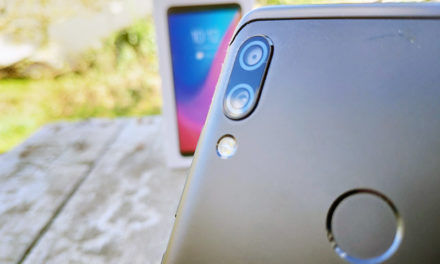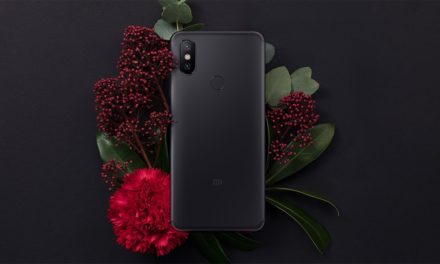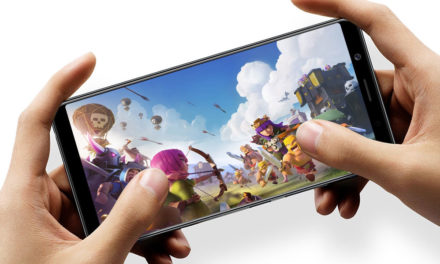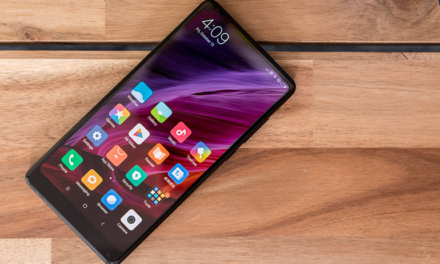
Top 5 Chinese smartphones under 50 thousand forints - March 2018

Affordable and above average performance phones from reputed manufacturers this month.

Welcome back to our selection of top phones. This month we have already offered cheap handsets here, and now comes the middle class kings. These mobiles are already strong, multi-core, big screen, we don’t even have to leave our pants at the checkout if we want to buy them. In the top three places on the list, perhaps unsurprisingly, there will be Xiaomi handsets, but the remaining two mobiles are also products of reputable manufacturers. Let's see what your next phone will look like!
contents show
1. Xiaomi Redmi 5 Plus
Obviously, we have to start this series with the new and very well done Xiaomi Redmi 5 Plus. This smartphone is a good option for those who are looking for an 18:9 aspect ratio mobile and insist on Xiaomi quality and support. In fact, the device does not have a whole six, it has "only" a 5,99-inch, 18:9 aspect ratio, FHD+, i.e. 1080 x 2160 pixel resolution display, and the central unit is the powerful but economical Qualcomm Snapdragon 625 SoC, which is accompanied by 4 GB RAM and 64 GB internal storage (expandable) have been added.
For photography, the Xiaomi Redmi 5 Plus received a 12-megapixel rear camera with an f / 2.0 aperture and a 5-megapixel self-timer camera. The battery has a capacity of 4000 mAh.
2. Xiaomi Redmi Note 4
If you don’t stick to the 18: 9 display, then last year’s Xiaomi model, which got the same central unit as the previous phone, the Snapdragon 425, may be a good choice for you. You can also choose from 4GB of RAM and up to 64GB of storage, but you can still get it cheaper than the Redmi 5 Plus.
This smartphone has a 5,5-inch FHD IPS display, a 13MP rear camera (with a Sony IMX258 or a Samsung S5K3L8 sensor) with an aperture of f / 2.0 that can shoot movies at up to 120 frames per second. The front camera is 5 megapixels.
The Redmi Note 4 boasts a large 4000 mAh battery that, when paired with a powerful processor, delivers outstanding battery life.
3. Xiaomi Mi A1
Still, but for the last time this month, we're taking a look at Xiaomi's portfolio. The Xiaomi A1 is a special phone in the company's range, because it does not run the usual MIUI system, but "factory" Android, in the form invented by Google. The mobile phone is basically a larger Redmi Note 4, as it is equipped with the same central unit, Qualcomm Snapdragon 625, which also includes 4 GB of RAM and, depending on the configuration, 32 or 64 GB of internal storage.
What makes the A4 a better choice than the Note 1, at least on the hardware side, is the presence of a secondary rear camera. This allows you to take professional-looking photos with a low-depth (bokeh) effect, such as the more expensive Xiaomi Mi 6. The two rear cameras have a resolution of 12 megapixels each and can take up to 4K videos in slow motion at 120 fps . The selfie camera works with a 5 megapixel Samsung S5K5E8 sensor.
The Xiaomi Mi A1 has been given a 3080 mAh battery and supports a wide range of 4G LTE networks as it comes in a global version.
4. Huawei Honor 7x
This phone shouldn’t really be on this list because it’s a little out of the 50 frame. True, just so little that it would no longer fit into the next article, the more expensive phones, so we thought you might forgive me if we put it here.
So if you can afford a little more, check out Huawei’s cheap phone too! Honor’s recently launched cost-effective phone has strong hardware. The central unit is the Huawei HiSilicon KIRIN 659, which is paired with 4GB of RAM and 32GB of internal storage (expandable). The display is a 5,93-inch FHD + with an 18: 9 display and a resolution of 21060 x 1080 pixels.
At the back of the phone is a 16 + 2 megapixel camera combination with an f / 2.2 aperture. The camera can record 4K video and can also take low depth of field images, although it does use software mode. In front is an 8 megapixel camera. The Huawei Honor 7x has a 3340mAh battery.
5. ZTE Blade V9
At the end of the list was ZTE's phone. The name Blade, like ZTE, of course, is known in Hungary, so maybe we trust it a little more than completely unknown Chinese manufacturers. The new Blade V9 is a really affordable device, which currently costs about 40 thousand forints. The smartphone will decide to peak in performance as it features a mid-range Qualcomm Snapdragon 450 processor paired with 3GB of RAM and 32GB of storage (expandable).
Importantly, the ZTE Blade V9 is already made with the new fashion display ratio, so it features a beautiful 5,7-inch FHD + 18: 9 panel with a fairly slim frame. Cameras also seem to be usable. On the back, there is a main 16-megapixel camera with f / 1.8 aperture and a secondary 5-megapixel camera that allows you to take bokeh-like images. The self-timer camera on the front panel is quite combo, with the sensor working underneath we can shoot 13 megapixel self-portraits.
The ZTE Blade V9 supports a wide range of 4G LTE networks (including the B20 band) and has a relatively large battery with a capacity of 3200 mAh. We get the device with the Android Oreo version.
(You can request notification of the arrival of the phone, it is not yet available)
We have reached the end of the article containing the top 5 phones we have selected. The last phone, the ZTE Blade V2018 presented at MWC 9, is still so fresh that it is almost warm, so we have to wait a bit for its arrival, but it is worth it, as the price of the 3/32 GB version is 41 thousand forints. We are waiting for you next month with our new Top 5 list!





















